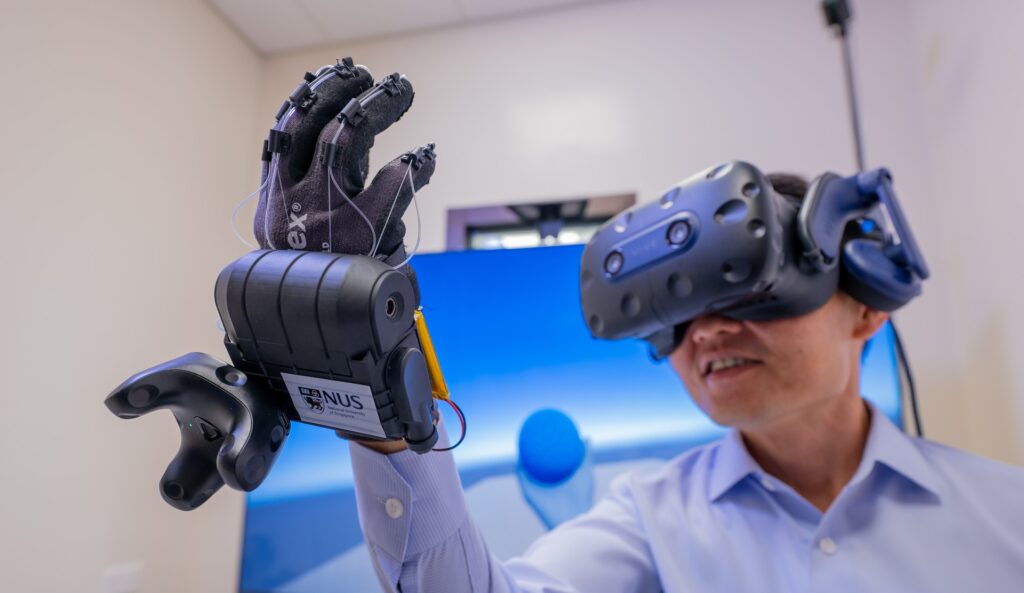
Researchers at the National University of Singapore (NUS) have come up with a new virtual reality (VR) glove that they say will make the sense of touch more realistic and immersive in a virtual world than previous haptic gloves.
Called HaptGlove, it is expected to help a user feel virtual raindrops or even a beating heart. Medical students can use it to check a pulse while those training for archery can feel the pull of a bow.
In a metaverse, a user can “feel” real-time pressure on his fingertips, while also sensing the shape and stiffness of an object that he is touching virtually.
This is possible with the use of haptic feedback modules in each finger, which are controlled wirelessly to help a suer sense a virtual object. A microfluidic pneumatic indenter delivers real-time pressure to simulate the sensation of touch.
The glove can also simulate the shape and stiffness of an object by restricting the user’s finger positions, making the interaction more realistic, according to the researchers.
While haptic gloves are not new, the NUS team say that many available today are not able to replicate the real-world sense of touch, say, with a vibration motor.
More realistic ones using pneumatic actuators help generate a sense of pressure that adds to the realism, but they are often bulky and limit movement.

Current methods of pressing on a virtual panel or interacting with another avatar lack the sensation of touch experienced in the real world, said Professor Lim Chwee Teck, director for the Institute for Health Innovation & Technology (iHealthtech) and leader of the research team.
“This prompted me to work with my team to develop a haptic glove to enable “physical” touch in the virtual world,” he added.
The HaptGlove from NUS promises a realistic experience by adding pressure to the mix while being wireless and lightweight at only 250g (many gloves weigh over 450g).
At the same time, the response time is shorter. So, when a user touches an object in the metaverse, the feeling of touch is sensed in under 20 milliseconds, which is close to instantaneous.
The NUS team started working on the HaptGlove back in 2019 and took two years to develop a prototype.
They aim to have a commercial product in two years through NUS spinoff Microtube Technologies, which develops sensing technologies for gaming and the metaverse.
The price? It is expected to cost half of today’s commercially available haptic gloves, which sell for between S$5,000 and S$20,000.
















